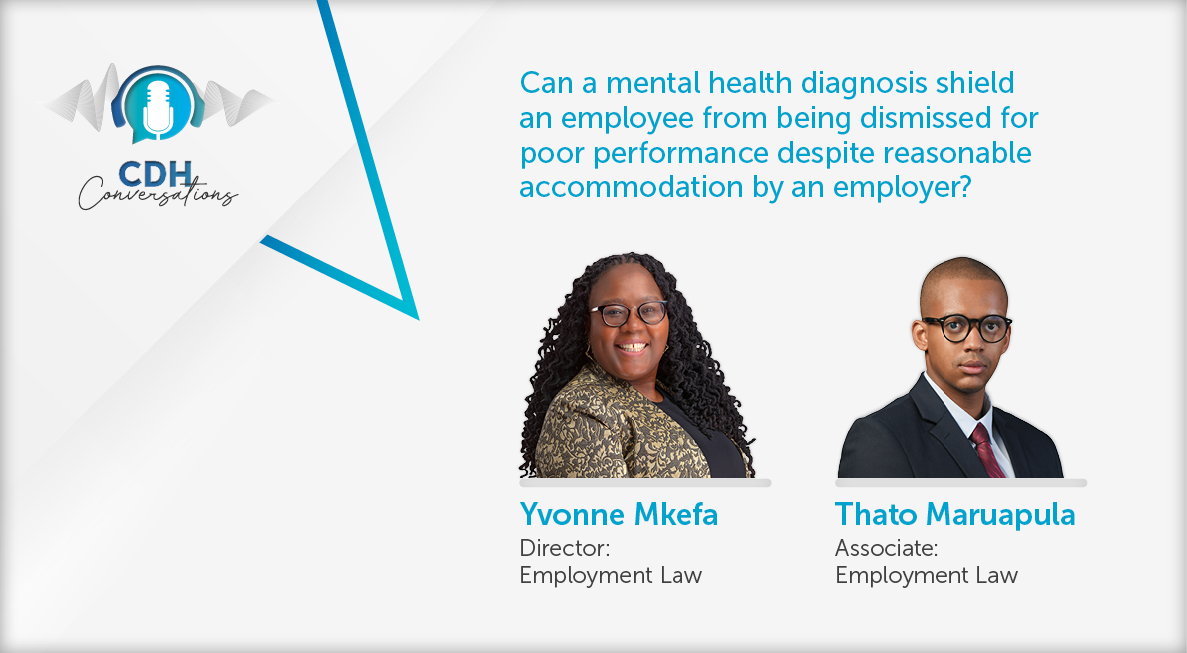The new GAAR: This tax season's debutante
Handed down at the end of September, the decision in Mr Taxpayer G v Commissioner for the South African Revenue Service IT 24502 is the first to comprehensively consider the interpretation and application of the new GAAR. This case clarifies the extent to which the new GAAR differs from the old GAAR, and whether the elements of the new GAAR should be interpreted differently to the old GAAR.
Background to the New GAAR
It was the Supreme Court of Appeal in Commissioner for the South African Revenue Service v NWK Limited 2011 (2) SA 67 (SCA) that most prominently pointed out that a taxpayer is free to structure their affairs in the most tax efficient manner possible within the bounds of the law. One bound of the law is the GAAR (both old and new).
At its most basic, the GAAR empowers the South African Revenue Service (SARS) to disregard or recharacterize any step(s) or part(s) of a transaction in the event this transaction constitutes an impermissible avoidance arrangement. SARS may then assess the parties to the transaction on the basis of the tax consequences attaching to the recharacterized transaction.
In order for a transaction to constitute an impermissible avoidance arrangement, it must display certain characteristics. Firstly, it must constitute an arrangement. Secondly, it must result in a tax benefit (thus constituting an avoidance arrangement). Thirdly, the tax benefit obtained must be the sole or main purpose. And finally, the transaction must contain one or more so-called tainted elements (in a business context, it was carried out in a means or manner not normally employed for bona fide business purposes, or it lacks commercial substance; in a non-business context, it was carried out in a means or manner not normally employed for bona fide purposes, other than obtaining a tax benefit; it has created rights or obligations not normally created at arm's length; or it results in the misuse or abuse of the provisions of the ITA).
It is here where the interpretation of the old GAAR and the new GAAR becomes relevant. Although the characteristics of an impermissible avoidance arrangement are common between the old GAAR and the new GAAR, the question of whether these characteristics should be interpreted differently between the two GAARs has been hotly debated.
Specifically, this debate has centred on what constitutes a tax benefit (the second requirement) and whether the sole or main purpose being the tax benefit (the third requirement) must be tested subjectively (ie whether it is the sole or main purpose of the parties that must be tested) or objectively (whether it is the sole or main purpose of the arrangement itself that must be tested). It is these two questions that are considered in Taxpayer G.
Facts of Taxpayer G
The facts of Taxpayer G are long and complicated owing to the complexity of the transactions which were audited by SARS. The Tax Court sets out the structure of these transactions in detail, but in short, the appellant was party to a scheme through which a pool of secondary tax on companies ("STC") credits was manufactured. These STC credits could then be used to shield dividends declared from STC (STC being the predecessor to dividends tax).
At a high level, and generally illustrated with reference to the companies used in one of the scheme iterations without any intention to be specific, the scheme operated by creating a structure of South African companies layered one on top of the other. The ultimate holding company at the top of this structure (Teea) then acquired all the shares in an Isle of Man company (Moonsun) by assuming a vast loan payable to Moonsun by Moonsun's Isle of Man holding company (it is unclear how this loan was created in the first place). However, Teea caused the shares in Moonsun to be registered in the name of the company at the bottom of the structure (Agete). Following this, Moonsun declared its claim (now against Teea) as an STC-free divided in specie to Agete. This created STC credits in the hands of Agete.
This claim against Teea (which was split into promissory notes B002 to B005) was in turn declared up the line of South African companies until promissory notes B002, B004 and B005 were held by the two companies immediately below Teea (Anyolite A and Anyolite B), and promissory note B003 was held by Skipper Sec, a company which had subscribed for a small number of shares at a lower level in the layer of companies. Skipper Sec acted as a nominee for the appellant and another company called Skipper. Therefore, half of promissory note B003 (amounting to R41,954,833.34) was received free of STC for the benefit of the appellant.
Third-party companies then acquired all the shares in Anyolite A and Anyolite B from Teea for cash equal to the loan payable by Teea in terms of the promissory notes. Teea used this cash to settle the promissory notes, and Anyolite A and Anyolite B used the cash from the settlement of promissory notes B002, B004 and B005 to declare dividends to the third-party companies which now held their shares. This created STC credits in these third-party companies' hands which these third-party companies could use to shield dividends they later declared from STC.
As for the appellant and Skipper, they should have received cash from Teea as repayments of their half shares of promissory note B003. Instead, the appellant and Skipper exchanged their half shares of promissory note B003 for rights against Teea to half the net proceeds realised by Teea from the sale of shares in Anyolite A and Anyolite B. In effect therefore, Teea used the cash it would have used to settle promissory note B003 (which would be the net proceeds in its hands from the sale of the Anyolite A and Anyolite B shares) to pay Skipper and the appellant in terms of their rights thereto.
The appellant argued that this scheme was in order to create distributable reserves. Therefore, the appellant argued that the sale of shares in Anyolite A and Anyolite B to the third-party companies was for the purpose of these third-party companies receiving dividends on the Anyolite A and Anyolite B shares, this in turn creating distributable reserves in their hands for the purpose of redeeming preference shares.
SARS, however, argued that the scheme created a pool of STC credits which could be sold to the third-party companies, thus reducing the STC payable when these companies declared dividends in future. SARS argued that the same principle applied to the receipt by the appellant of its half share of promissory note B003 without STC having been payable thereon, the appellant in effect receiving tax-free remuneration in respect of the creation of the scheme.
Therefore, SARS argued that the sole or main purpose of the scheme was the creation of a pool of STC credits, this being a tax benefit enjoyed by the third-party companies which acquired shares in Anyolite A and Anyolite B and by the appellant. In addition, SARS argued that the scheme was carried out in a means or manner not normally employed for bona fide business purposes, and that it lacked commercial substance. Therefore, SARS argued that the scheme was an impermissible avoidance arrangement, and that it was permitted to apply the new GAAR thereto.
Tax Court's Finding
It was clear before the Tax Court that the scheme constituted an arrangement. As a result, there were three contentious questions before it. Firstly, whether the scheme resulted in the appellant enjoying a tax benefit. Secondly, and if so, whether obtaining the tax benefit was the sole or main purpose. And thirdly, whether the scheme displayed the two tainted elements argued by SARS.
Tax Benefit
There is a wealth of case law relating to the interpretation of a tax benefit under the old GAAR, and the Tax Court in Taxpayer G turned to this in interpreting the same requirement under the new GAAR.
At its most basic, a tax benefit was held in Smith v CIR 1964 (1) SA 324 (A) to be the escaping from, or prevention of, an anticipated tax liability. This may be an uncertain, vague or remote liability as held in Hicklin v CIR 41 SATC 17. On this basis, the appellant argued that a tax benefit can only refer to escaping or preventing an anticipated tax liability that, but for a transaction (ie the scheme in the appellant's case), would be suffered. Therefore, if a transaction is structured in such a way that it does not create an anticipated tax liability to be avoided, the appellant argued this cannot constitute a tax benefit.
Considering Smith and Hicklin, but looking to Sasol Oil Proprietary Limited v Commissioner, SARS [2019] 1 All SA 106 (SCA), the Tax Court in Taxpayer G held that the appellant's argument only holds true in a situation where a taxpayer will neither suffer a tax liability if implementing a transaction, nor if deciding not to implement the transaction. Therefore, the Tax Court rejected the appellant's argument in the circumstances. Instead, the Tax Court held that under the new GAAR the test for a tax benefit is simply whether a taxpayer would have suffered a tax liability if it were not for the manner in which a transaction was structured. If the taxpayer would have suffered a tax liability, then a tax benefit has been enjoyed.
Applying this test to the appellant, the Tax Court in Taxpayer G stated that in order to assess whether the appellant had enjoyed a tax benefit, the tax liability the appellant would have suffered had the amounts received from Teea been received as a fee must be compared to the tax liability (or lack thereof) the appellant suffered under the scheme whereby the amounts were received as STC-free dividends. On this basis, the Tax Court held that the appellant had enjoyed a tax benefit.
Sole or Main Purpose
Turning to whether this tax benefit was the sole or main purpose, the Tax Court faced the question of whether this is a subjective or objective test head-on.
Under the old GAAR, it had been held in SIR v Gallagher 1978 (2) SA 463 (A) that this was a subjective test – the question was whether the sole or main purpose of the parties to a transaction was to obtain a tax benefit. This view had been supported by the decision in Glen Anil Development Corporation v SIR 1975 (4) SA 715 (A) where the Court held that an objective test for sole or main purpose would confuse the purpose of a taxpayer entering into a transaction with the effect of the transaction.
With the new GAAR, however, came a slight change in the wording of the sole or main purpose requirement. Despite the decisions in Gallagher and Glen Anil, the Tax Court in Taxpayer G therefore determined that this change in wording signified a break with the test applied under the old GAAR. Rather than the test being purely subjective, the Tax Court held that the wording of the new GAAR refers to the sole or main purpose of the arrangement itself.
Nevertheless, considering the decision in Commissioner, SARS v ABSA Bank Limited 2024 (1) SA 361 (SCA) and SARS' Draft Comprehensive Guide to the General Anti-Avoidance Rule which was published following the introduction of the new GAAR, the Tax Court held that the sole or main purpose test is also not purely objective. Rather, the Tax Court held that this test moves towards a more objective standard by measuring the purpose of an arrangement itself on the basis of all relevant facts and circumstances, including the subjective purpose of the parties. Therefore, the Tax Court held that under the new GAAR the sole or main purpose test is now an objective test that measures the purpose of an arrangement, but still takes into account the subjective purpose of the parties to the arrangement.
Applying this test to the appellant, the Tax Court found that in fact the sole or main purpose of the scheme in question was to obtain the tax benefit enjoyed by the appellant. The Tax Court reached this conclusion by examining the appellant's own testimony, by considering the facts surrounding the companies used by the appellant in the scheme structure, and by looking at the reason for the scheme being structured in the way that it was (particularly with reference to the manner in which the appellant was remunerated for devising the scheme through STC-free dividends). Therefore, the Tax Court held that the sole or main purpose of the scheme was in fact the obtaining of the tax benefit enjoyed by the appellant.
Tainted Element
Finally, considering the tainted elements argued by SARS, the Tax Court found that the scheme was carried out in a means and manner not normally employed for bona fide business purposes, this on the basis that, inter alia, no cash was used in the creation of the scheme (despite vast loan claims being created), Teea caused the shares it acquired in Moonsun to be registered in Agete's name (in effect gifting these shares to Agete), Teea assumed a vast liability to Moonsum (which was then declared up the line of companies) which it knew it would not be able to settle itself, and the appellant exchanged a half share in promissory note B003 for rights against Teea which could result in less being earned by the appellant than had the appellant enforced promissory note B003. For these same reasons, the Tax Court held that the scheme created rights and obligations which would not be created by parties acting at arm's length.
In addition, the Tax Court held that the scheme lacked commercial substance on the basis that it was established without creating business risk or cash flows, while that the appellant obtained an STC-free dividend without incurring any business risk either.
Given all these findings, the Tax Court in Taxpayer G held that the scheme in question constituted an impermissible avoidance arrangement which was susceptible to the new GAAR. Therefore, as SARS had done when it assessed the appellant, the Tax Court recharacterized the STC-free dividend received by the appellant as a fee in respect of devising the scheme, this fee constituting income (and thus being taxable) in the appellant's hands.
Clarifying the Interpretation of the New GAAR
Looking beyond its complicated facts and argument, Taxpayer G clarifies the interpretation of the new GAAR. No longer is it arguable that a tax benefit must be measured by comparing a situation where no transaction took place at all to the situation where the transaction did in fact take place. Nor is it arguable that the sole or main purpose test is still purely subjective.
This means that when testing whether a transaction will result in a tax benefit, the question to be asked is whether, but for the transaction being structured in a way which avoids a tax liability, would a party have incurred a tax liability. This is only concerned with the manner in which the transaction was structed, and not whether the transaction was implemented at all. This means the so-called choice principle (alluded to in NWK above) cannot be automatically applied. In other words, a taxpayer cannot argue that, in implementing a transaction, it merely chose the alternative which resulted in the least amount of tax – this may still result in a tax benefit being enjoyed for purposes of the new GAAR.
And when testing whether a tax benefit is the sole or main purpose of a transaction, this must be done objectively – the question to be asked is whether, on the objective facts, the transaction has a commercial purpose to it. If not, and the transaction (or even a step thereof) is solely or mainly tax driven, then the transaction is one tainted element away from triggering the new GAAR.
This has serious implications for parties structuring transactions. More now than ever, parties should seek expert tax advice to ensure that their transactions stand up under scrutiny and do not fall foul of the new GAAR. If not, then as the appellant found out in Taxpayer G, there might be a heavy price to pay.
The information and material published on this website is provided for general purposes only and does not constitute legal advice. We make every effort to ensure that the content is updated regularly and to offer the most current and accurate information. Please consult one of our lawyers on any specific legal problem or matter. We accept no responsibility for any loss or damage, whether direct or consequential, which may arise from reliance on the information contained in these pages. Please refer to our full terms and conditions. Copyright © 2025 Cliffe Dekker Hofmeyr. All rights reserved. For permission to reproduce an article or publication, please contact us cliffedekkerhofmeyr@cdhlegal.com.
Subscribe
We support our clients’ strategic and operational needs by offering innovative, integrated and high quality thought leadership. To stay up to date on the latest legal developments that may potentially impact your business, subscribe to our alerts, seminar and webinar invitations.
Subscribe


